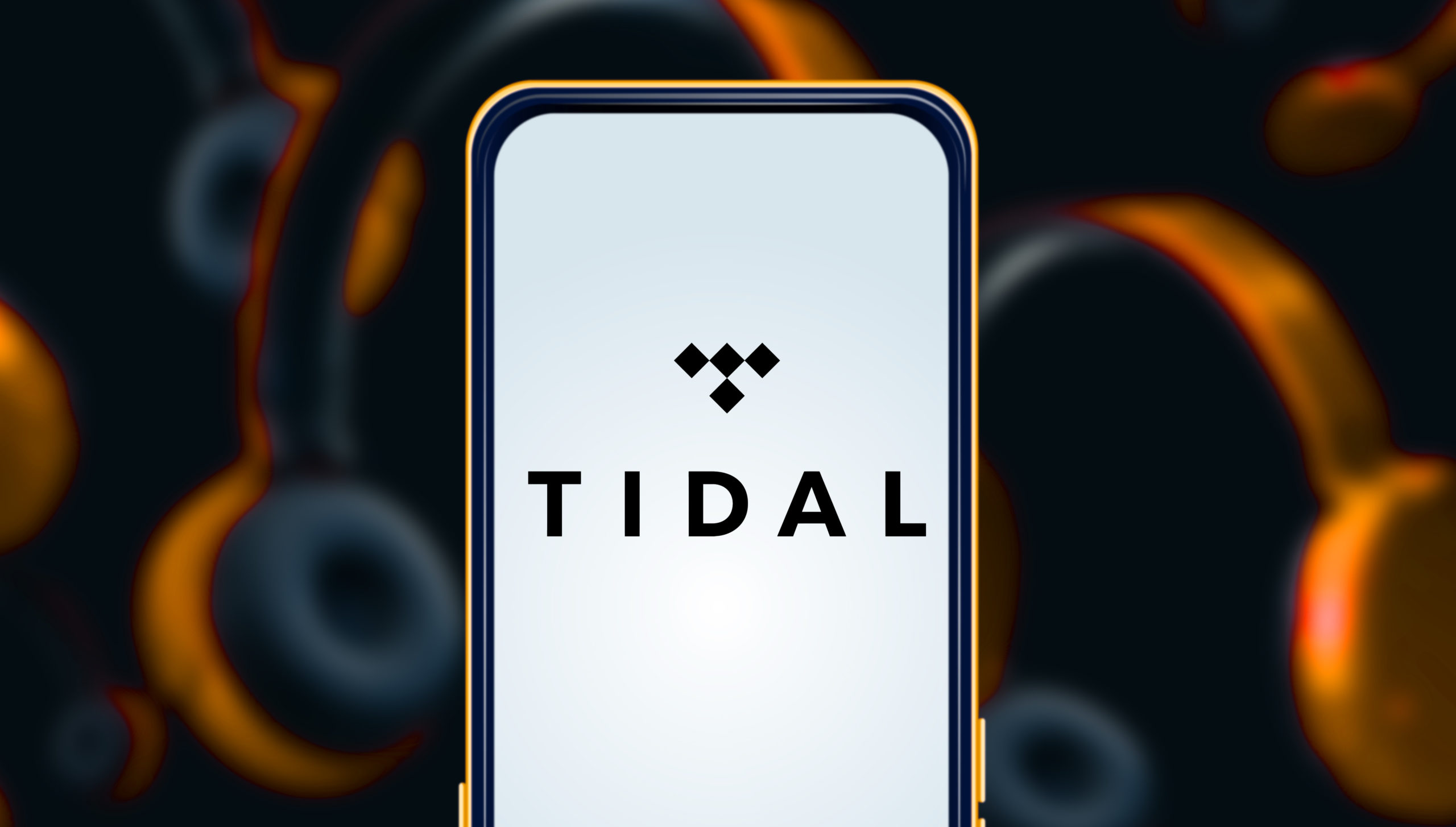Image credit: DANIEL CONSTANTE / Shutterstock.com
Tidal, the pioneering platform renowned for its commitment to high-fidelity audio, has unveiled a strategic revamp of its lossless and immersive audio formats. This pivotal decision, slated to take effect on July 24th, marks a seismic shift in the company’s approach to delivering unparalleled sonic experiences to its discerning user base.
The Pursuit of Uncompromised Audio Quality
Tidal has long been revered as a bastion of pristine audio quality, catering to the discerning tastes of audiophiles and music enthusiasts alike. The platform’s unwavering dedication to lossless audio formats has set it apart from its contemporaries, garnering a loyal following among those who refuse to compromise on sonic fidelity.
Streamlining the Lossless Audio Experience
In a bold move, Tidal has announced that it will be phasing out support for the Master Quality Authenticated (MQA) and 360 Reality Audio formats. This strategic decision underscores the company’s commitment to providing a seamless and accessible lossless audio experience to its users.
The MQA format, while lauded for its ability to retain superior audio quality with smaller file sizes than traditional FLAC files, has faced challenges in terms of widespread adoption and compatibility. By transitioning away from MQA, Tidal aims to streamline its lossless audio offerings, ensuring a more consistent and user-friendly experience across a broad range of devices and platforms.
Embracing Open-Source and Industry-Leading Standards
Moving forward, Tidal has declared its intention to embrace the Free Lossless Audio Codec (FLAC) as the default format for stereo audio streaming. This open-source codec has gained widespread acceptance within the audiophile community, offering uncompromised audio quality without the constraints of proprietary formats.
Additionally, Tidal has chosen to adopt Dolby Atmos as its preferred format for immersive audio experiences. This cutting-edge technology, renowned for its ability to create a multi-dimensional soundscape, has garnered widespread industry adoption and boasts a vast catalog of compatible devices and content.
Prioritizing Accessibility and Cost-Effectiveness
In a candid acknowledgment of the challenges posed by proprietary formats, Tidal has cited the widespread compatibility, catalog availability, and artist adoption of Dolby Atmos as key factors in its decision-making process. By embracing industry-leading standards, the platform aims to provide its users with a seamless and cost-effective means of accessing high-quality audio content.
Furthermore, Tidal’s embrace of the open-source FLAC format for stereo audio streaming eliminates the need for artists to navigate through third-party intermediaries, fostering a more direct and efficient creative process.
Ensuring a Smooth Transition for Existing Users
For Tidal subscribers who have amassed collections of MQA tracks or albums, the platform has pledged to automatically replace these files with the highest available FLAC quality versions. This seamless transition extends to MQA files downloaded for offline playback, ensuring that users can continue to enjoy their cherished music libraries without interruption.
Conversely, 360 Reality Audio files will be rendered unavailable for streaming, reflecting Tidal’s strategic shift towards more widely adopted immersive audio formats.
Continuous Innovation and Commitment to Excellence
While Tidal has expressed no immediate plans for further changes to its audio format offerings, the company’s recent actions underscore its dedication to continuous innovation and its unwavering commitment to delivering the finest audio experiences to its user base.
This strategic overhaul comes on the heels of Tidal’s decision to consolidate its subscription tiers and lower its monthly pricing to $10.99, a move that aims to make premium audio streaming more accessible to a broader audience.
Redefining the Music Streaming Landscape
Tidal’s bold move to reshape its lossless and immersive audio formats represents a seismic shift in the music streaming landscape. By embracing open-source and industry-leading standards, the platform is poised to deliver unparalleled sonic experiences while fostering a more inclusive and cost-effective ecosystem for artists and music enthusiasts alike.
As the demand for high-fidelity audio continues to grow, Tidal’s commitment to pushing the boundaries of audio quality positions it as a trailblazer in the ever-evolving world of music streaming.
The Audiophile’s Sanctuary: Tidal’s Unwavering Pursuit of Sonic Perfection
For years, Tidal has stood as a beacon of hope for audiophiles and music aficionados seeking an uncompromising sonic experience. The platform’s unwavering dedication to lossless audio formats has garnered a loyal following among those who refuse to settle for anything less than sonic perfection.
Tiers of Audio Quality: Catering to Every Listener’s Needs
Tidal’s tiered approach to audio quality has long been a hallmark of its service, offering a range of options to cater to diverse listening preferences and technical capabilities. At the entry-level, the platform provides a low-quality tier that utilizes AAC files capped at 320kbps, suitable for casual listening or scenarios where bandwidth is limited.
For those seeking a more immersive experience, the high-quality tier offers CD-quality lossless FLAC files, ensuring that every nuance and detail of the music is faithfully reproduced.
However, it is the Max tier that truly sets Tidal apart, catering to the most discerning audiophiles. Until recently, this tier featured MQA and higher-resolution FLAC files, pushing the boundaries of audio fidelity and offering an unparalleled listening experience.
The MQA Conundrum: Balancing Innovation and Accessibility
Tidal’s decision to discontinue support for the MQA (Master Quality Authenticated) format has sent ripples through the audiophile community. While MQA garnered praise for its ability to retain superior audio quality with smaller file sizes than traditional FLAC files, its adoption was hindered by the requirement for specialized hardware or software to play the files.
This limitation, coupled with the introduction of Tidal’s HiRes FLAC format last year, signaled the impending demise of MQA on the platform. By making HiRes FLAC the preferred default for Max quality streaming, Tidal effectively paved the way for a more streamlined and accessible approach to lossless audio delivery.
Embracing Open Standards: The Rise of FLAC and Dolby Atmos
In a move that underscores Tidal’s commitment to accessibility and cost-effectiveness, the platform has embraced the Free Lossless Audio Codec (FLAC) as the default format for stereo audio streaming. This open-source codec, widely adopted by the audiophile community, offers uncompromised audio quality without the constraints of proprietary formats.
Additionally, Tidal has chosen to adopt Dolby Atmos as its preferred format for immersive audio experiences. This cutting-edge technology, renowned for its ability to create a multi-dimensional soundscape, boasts widespread industry adoption and a vast catalog of compatible devices and content.
By aligning with these industry-leading standards, Tidal aims to provide its users with a seamless and cost-effective means of accessing high-quality audio content, while fostering a more inclusive and efficient creative ecosystem for artists.
Prioritizing User Experience and Artist Empowerment
Tidal’s strategic decisions regarding audio formats were driven by a multitude of factors, chief among them being the prioritization of user experience and artist empowerment. By embracing widely compatible formats like Dolby Atmos and the open-source FLAC, the platform aims to eliminate barriers to entry and ensure that its users can seamlessly access premium audio content across a broad range of devices.
Moreover, Tidal’s embrace of FLAC for stereo audio streaming eliminates the need for artists to navigate through third-party intermediaries, fostering a more direct and efficient creative process. This move not only empowers artists but also aligns with Tidal’s overarching mission of delivering uncompromised audio experiences to its discerning user base.
Ensuring a Smooth Transition for Existing Libraries
In recognition of the potential disruption caused by the format changes, Tidal has implemented measures to ensure a smooth transition for its existing user base. For subscribers who have amassed collections of MQA tracks or albums, the platform has pledged to automatically replace these files with the highest available FLAC quality versions.
This seamless transition extends to MQA files downloaded for offline playback, ensuring that users can continue to enjoy their cherished music libraries without interruption. Conversely, 360 Reality Audio files will be rendered unavailable for streaming, reflecting Tidal’s strategic shift towards more widely adopted immersive audio formats.
Continuous Innovation and Commitment to Excellence
While Tidal has expressed no immediate plans for further changes to its audio format offerings, the company’s recent actions underscore its dedication to continuous innovation and its unwavering commitment to delivering the finest audio experiences to its user base.
This strategic overhaul comes on the heels of Tidal’s decision to consolidate its subscription tiers and lower its monthly pricing to $10.99, a move that aims to make premium audio streaming more accessible to a broader audience. By combining these initiatives, Tidal is poised to redefine the music streaming landscape, offering unparalleled sonic experiences while fostering a more inclusive and cost-effective ecosystem for artists and music enthusiasts alike.
The Future of Music Streaming: Tidal’s Vision
As the demand for high-fidelity audio continues to grow, Tidal’s commitment to pushing the boundaries of audio quality positions it as a trailblazer in the ever-evolving world of music streaming. By embracing open standards and industry-leading technologies, the platform is poised to deliver unparalleled sonic experiences while fostering a more inclusive and cost-effective ecosystem for artists and music enthusiasts alike.
With its unwavering pursuit of sonic perfection and its dedication to continuous innovation, Tidal stands as a beacon of hope for audiophiles and music aficionados seeking an uncompromising listening experience. As the future of music streaming unfolds, Tidal’s vision promises to redefine the boundaries of what is possible, elevating the art of music to new heights and ensuring that every note, every nuance, and every sonic detail is faithfully reproduced for generations to come.



